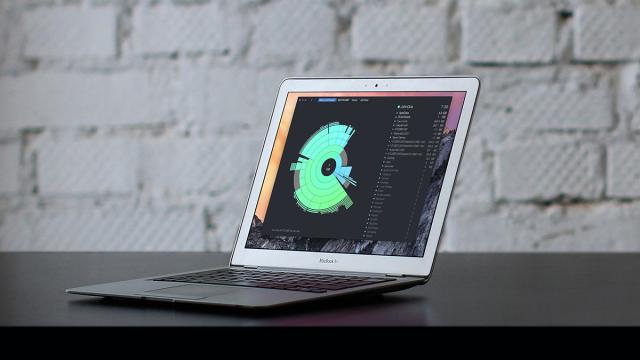Bad apps are draining your battery life, sucking up your local storage, and causing your devices to crash more often than they should – and the worst part is, you might not realise who the worst offenders are. Here’s how to track down badly behaving apps on the major desktop and mobile platforms, and kick them to the curb.
This is something well worth doing on a regular basis. Badly written or buggy apps can suck up system resources and leave your other apps floundering, as well as having a negative impact on the performance of your devices. If you find a troublesome app that you just can’t live without, check if an updated version is available online, or get in touch with the developer directly.
Android

We’ll start with the checks you can make using Android’s own tools. For example, you can now get reports on the worst battery hogs: From Settings, tap Battery, then scroll down to the bottom of the page. You can see which apps are using up most juice and have been running for longest.
As for storage, tap the Storage link in Settings, then either Photos & videos, Music & audio, Games, Movie & TV apps, or Other apps to see the apps taking up most room in each category. Remember that a lot of these apps might sync content like music and movies for offline access, which is probably why Google splits them up like this.
Tap any app to see how much room is taken up by the app itself (“App size”) and how much room is taken up by whatever you’ve decided to save and cache (“User data”). That should give you some idea of how much space you might claim back by, for example, deleting your synced Spotify playlists.
If you want to dig deeper, DiskUsage is one of several apps that can give you a closer look at which apps and files are hoarding all your phone’s storage space, both on the internal storage and any memory cards you might have slotted in. The app only has a couple of screens, but gives you a neat visualisation for how big your apps are compared with others, so you can quickly see the most bloated ones.
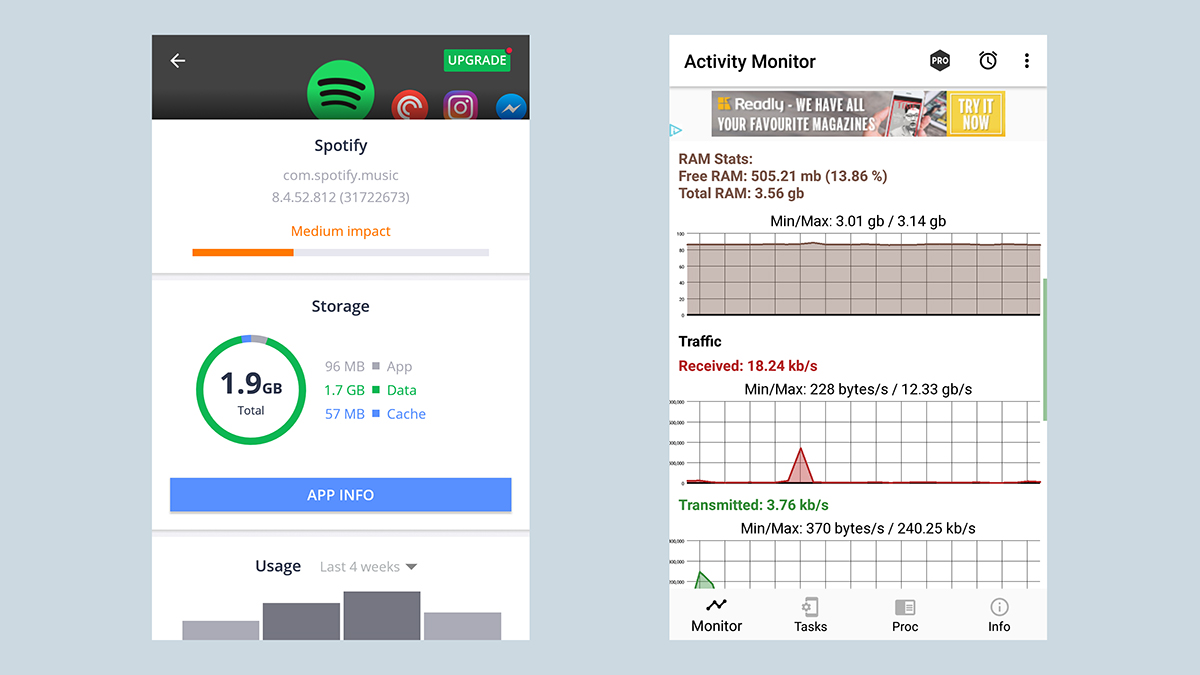
With Android 8.0 Oreo putting restrictions on how much information third-party apps can grab from the system, it’s less straightforward to check up on memory usage. The stock (Pixel) version of Android can do it, but you need to enable developer options – from Settings, tap System then About phone, and tap the Build number entry seven times to enable developer access.
Go back one screen and tap the new Developer options entry. Tap Memory, then Memory used by apps to see which ones are sucking up your phone’s RAM — note that you can change the timescale for this at the top of the Memory screen. Tap on any app entry for a more detailed readout.
A couple of apps that do a good job of monitoring CPU and RAM usage in real time are CCleaner and Activity Monitor – both are free, with an option to pay to remove the advertising. Due to the restrictions introduced in Oreo, they can’t show you usage by individual apps, but they can show you overall CPU strain and RAM usage, so you can look for changes as you launch and close different apps.
At least removing apps is easy, if you find some that are taking up too much room or memory for your liking – tap and hold on the relevant icon in the app drawer, then drag it up to the Uninstall button at the top. If it’s an app you’re fond of, you might want to give it a second chance and see if a clean install helps to solve some of the issues.
iOS
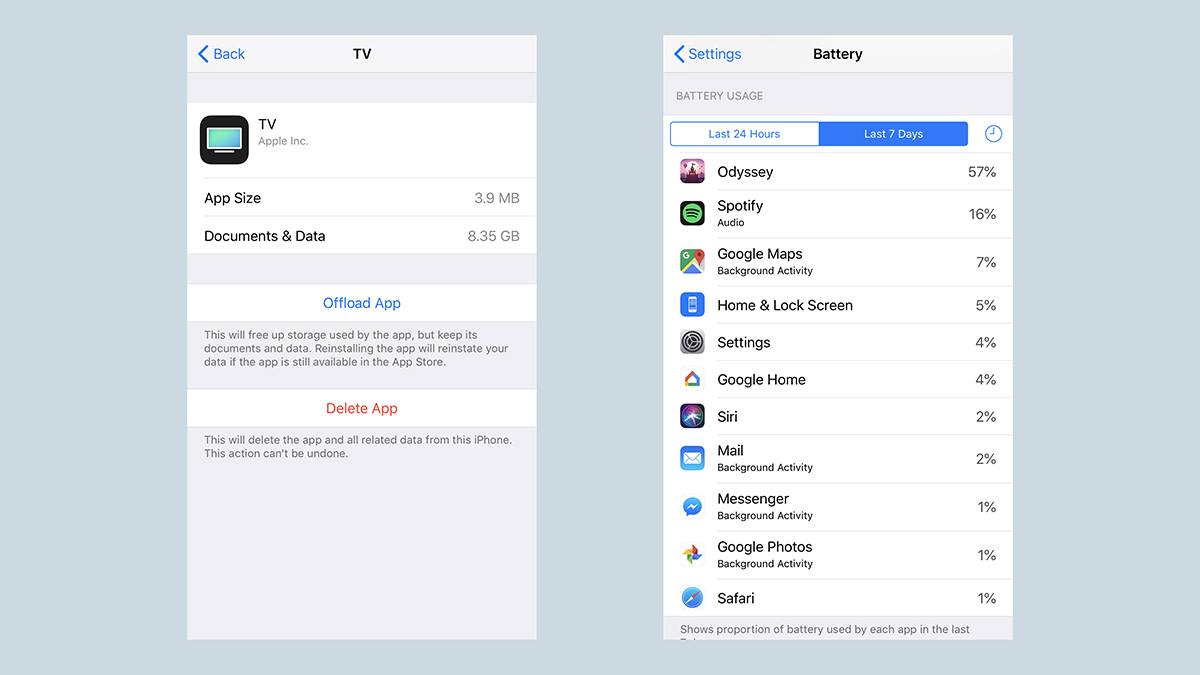
If you prefer Apple phones, then start by opening up Settings and tapping Battery. Down at the bottom of the screen you’ll see the apps that have been hammering your phone’s battery the hardest – you can check up on the last 24 hours or the last 7 days, and tap on any app to see how much time you’ve been using it for.
When it comes to storage, you need to tap on General from the front screen of Settings, and then on iPhone Storage. Below some recommended ways to clean up the storage on your device, you’ll see how much room all of your apps are taking up, starting with the biggest ones (usually the ones syncing content to your phone).
Tap on any of these entries to see the size of the app itself and the size of the documents and data associated with it: Downloaded iTunes movies, synced Spotify playlists, and so on. By tapping Offload App you can remove the app, but keep the data (in case you install it again) – if you want to remove the data, you need to do it inside the app. You can also tap Delete App to uninstall it completely, documents and data and all.
Apple being Apple, third-party apps don’t get much of a look-in when it comes to monitoring what other apps are doing, but you can find system monitors that analyse the performance of iOS as a whole – if you’re prepared to pay for them.
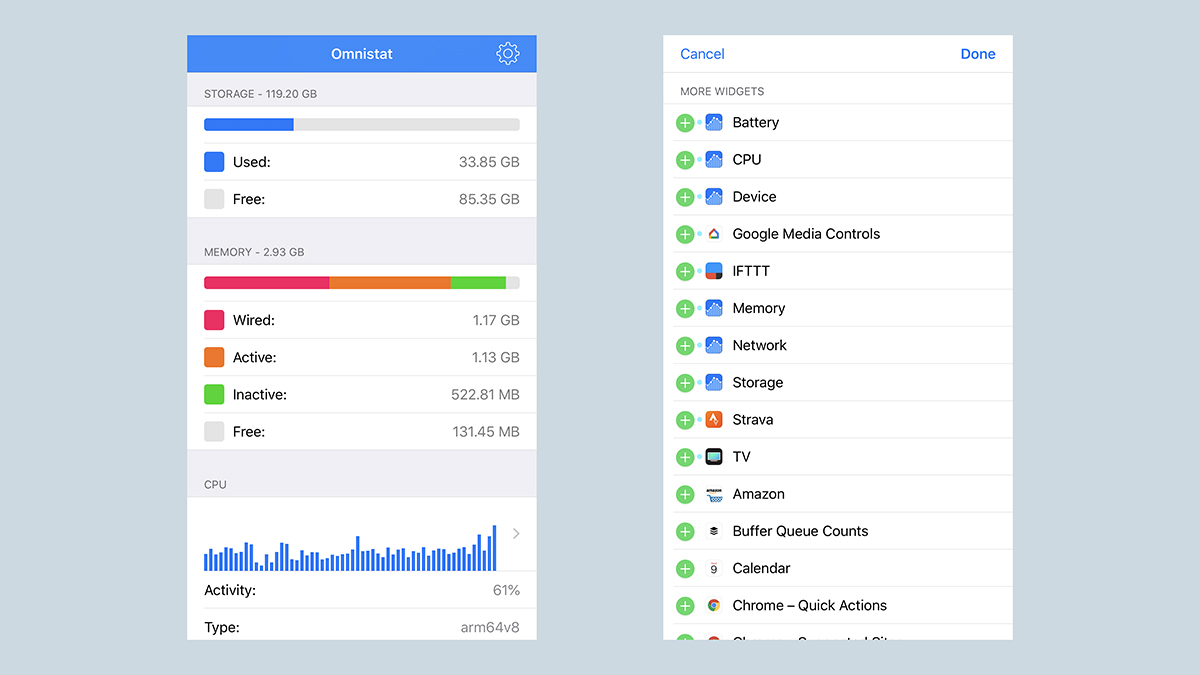
Perhaps the best and most comprehensive of the bunch is Omnistat, yours for $US1.99 ($3). You get a breakdown of storage, RAM, and CPU use, but like the equivalent tools on Android you can’t break this down by app – it’s really a question of launching and closing down apps individually to gauge the effect on system resources. You can put widgets for all these stats in the Today View as well.
Also worthy of a mention are System Monitor Ultimate ($2.99) and System Status Pro ($2,99), both of which offer up the same sort of readings as Omnistat, in a variety of forms, and both of which are worth the price of admission for helping you keep tabs on the health of your system.
If you do find certain apps are claiming more than their fair share of system resources or crashing more often than you’d like, it is of course simple to remove them – tap and hold on any app icon, then hit the X button to the top left to remove it.
As we mentioned with Android, it’s always worth giving an app a second chance though, because there’s a possibility that a clean install will solve some of the problems you’re having and get it behaving properly again.
Windows
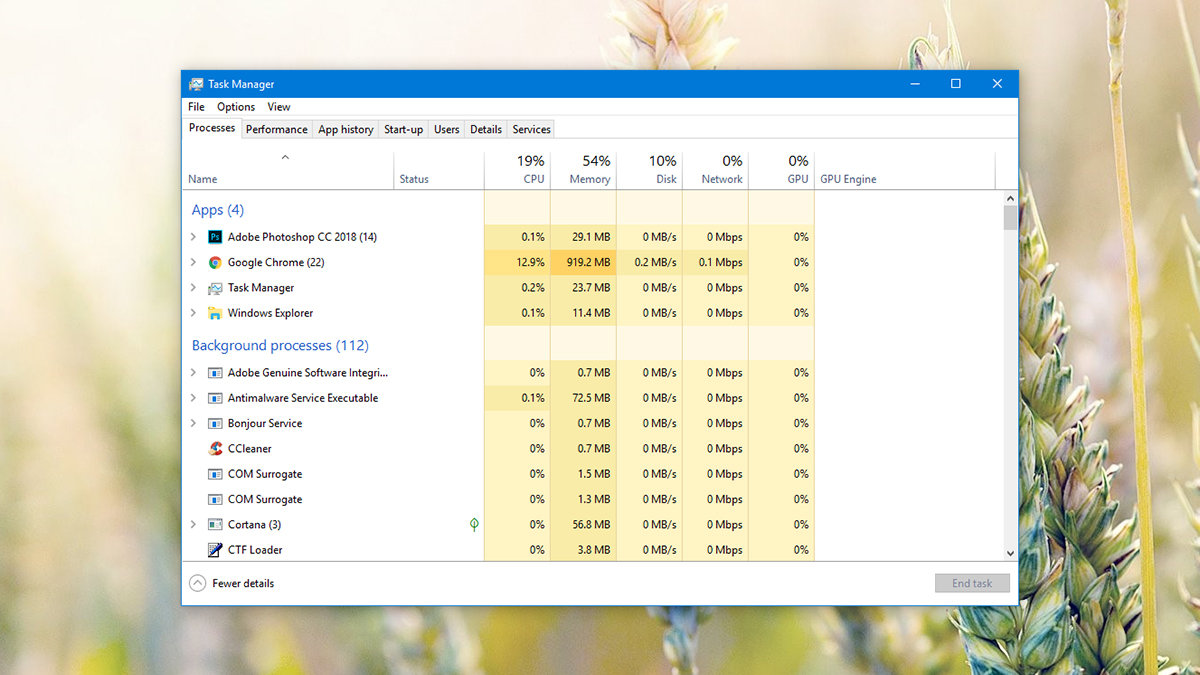
The Task Manager is the traditional go-to when it comes to analysing exactly what’s happening on your Windows system and which apps are sucking up more memory and CPU time than they really should be. Fortunately the latest version of Windows makes accessing and interpreting the Task Manager very straightforward.
Right-click on the taskbar and choose Task Manager, then switch to the Processes tab to root out the worst offenders as far as RAM and CPU usage are concerned. You can highlight an app and click End task at any time to force close it, but be sure that you don’t have any unsaved work open in it at the time. Switch to the Performance tab for more of an overview of how your system is performing. This can be handy if you want to track the impact of an application over a few minutes.
Finding applications that take up a large chunk of disk space can be tricky. One option is to dive into File Explorer, but all the data associated with a program might not be in that program’s folder. A better option is to launch Windows Settings via the cog icon on the Start menu, then click Apps and Apps & features. Scroll down the screen to see how much room each app is taking up on disk (you can even sort the list by size if you need to).
Click on any app and choose Uninstall to remove it or Modify to change which of its components are installed – it might be that you can cut down on some of a program’s bloat without removing it altogether. Alternatively, we’re also long-term fans of the free WinDirStat, which gives you a more visual overview of which programs and files are using up all your hard drive space.

If you’re on a laptop, then you probably want to identify the applications that are draining your battery the fastest – the worst offenders might not be worth a place on your computer. From Settings, click System then Battery, and then select Battery usage by app. The following screen gives you a rundown of which programs are hogging the battery (and probably putting more demands on your system resources at the same time).
Should you start having problems with a frequently crashing app, you might want to delve into the crash logs for the OS to see just how often crashes are occurring. Search for “reliability” from the taskbar, then click the View Reliability history option that appears.
You then get a day-by-day or a week-by-week breakdown of everything that’s happened on your system, including program crashes (marked by the red cross icons). In the table underneath the main chart, you get a list of which applications have been crashing and when, so you know it’s not just your imagination that your web browser falls over every couple of hours.
As we’ve mentioned, programs can be uninstalled through Settings. That said, it’s worth doing a reinstall and an update of a troublesome application before ditching it completely. Many apps issues will get solved if you clear out the current installation and start again from scratch, removing any corrupted data and redundant files along the way.
macOS

If you want to know what’s chewing through all the system resources on your Mac, head to Activity Monitor first of all: You can find it with a search in Spotlight (hit Cmd+Space to bring the search box up).
You’ll then be met with a list of everything running on your system, together with details of how much CPU time and RAM it’s using up (via the CPU and Memory tabs respectively). The information can be a little difficult to sift through, so select View and then All Processes, Hierarchically to display the data in a way that’s easier to interpret (especially if then you collapse the processes by app).
Big battery drainers can be identified from here too, with a click on the Energy tab. Here you can see the current energy impact of each program, together with an average taken over time. For a more concise summary, click the battery icon on the menu bar, which shows apps “using significant energy” right now. Apps and processes can be stopped by clicking on them and then on the Force stop button (top left), but you’re better closing down the program in the normal way to make sure everything is saved.
If you want something that pulls together all of this information at a glance, give iStatistica a look – it costs $5.99 but there’s a free trial available. You don’t get any extra information that Activity Monitor doesn’t give you, but it’s all well presented and shows up in the Notification Centre so you can keep an eye on system stats as your applications run.
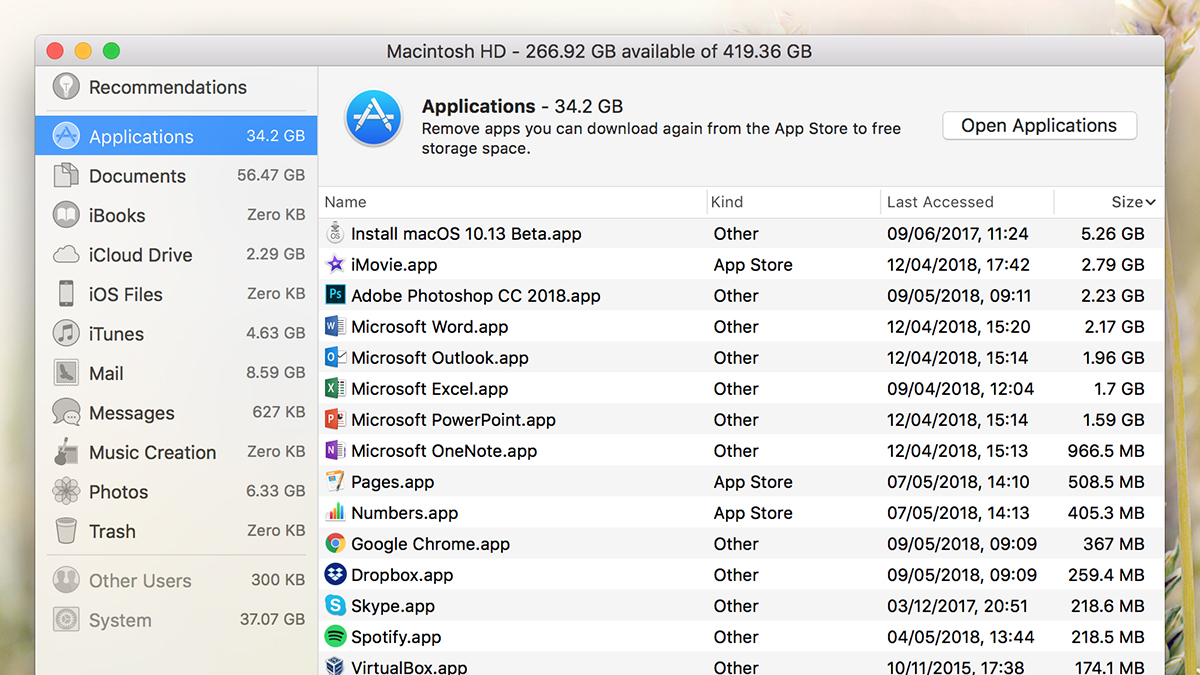
What Activity Monitor won’t tell you is which applications are taking up most room on disk. To do this, click the Apple menu, then About This Mac, then Storage. Click Manage next to any of your drives to see the size of applications on disk, listed down the left; for non-Apple apps, select the Applications entry to get a rundown. The biggest space hoggers are listed up at the top by default.
If you want some extra functionality and don’t mind paying for it, DaisyDisk ($14.99 with a free trial available) breaks down disk usage beautifully, and comes with a variety of tricks for freeing up room on your local storage — you can just drag and drop files and programs into a bucket to delete them in one go, for instance.
Various other issues can be flagged using the Console utility, which is easily launched via a search from Spotlight. Click User Reports to see recent crash logs, and the program they were associated with (which will come first in the report name). While the report text itself won’t make much sense to non-developers, this screen does help you identify programs that are having difficulties running normally.
We’d repeat the advice we’ve mentioned above: Try uninstalling then reinstalling problematic apps to see if they behave better second time around. Apps can be removed via the X button next to icons on the Launchpad (click and hold to bring the button up), by dragging them to the Trash from the Applications window, or by finding an uninstaller inside the app folder in the Applications window.
